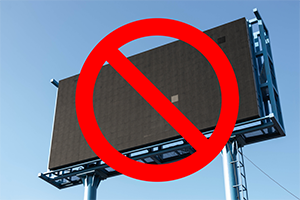
States Where Billboards are Banned
Believe it or not, billboards are actually banned in some states. But why?
Vermont, Alaska, Hawaii, and Maine all prohibit billboards within their borders. These laws were enacted not too long ago; in fact, they came about in the latter part of the 20th century when billboards hit their apex, for better or worse. Before the rise of the Internet and social media in the past 20 years, advertisers had fewer venues to promote their products and messages. There was only print, television, and perhaps most importantly, billboards that offered opportunities for advertisement.
Fueled by high demand from advertisers, billboards blossomed across the country, not just in cities, but on rural highways as well. During road trips, people would likely come across dozens of billboards that were promoting a variety of goods and services. From religious messaging to tobacco products, highways were filling up with billboards.
To mitigate this, many states imposed regulations on the production of billboards, while others banned them outright. Vermont, Alaska, Hawaii, and Maine are the only four states to do so, and they share a common reason as to why: maintain the natural beauty of their state.
Before the 1980s, Maine’s highways were filled with hundreds of billboards that promoted food and tobacco products. In the late 1970s, former Maine Gov. James B. Longley signed into law an act that resulted in the removal of 8,500 billboards.
In 1927, Hawaii’s billboard ban went into effect, which was actually more than 20 years before it became officially a part of the United States. With the inability to use billboards, Hawaiin politicians have relied on sign-waving and human billboards to promote their campaigns.
Vermont’s billboard ban took effect in 1968. In place of billboards, the state of Vermont uses travel boards to convey pertinent information to travelers. On-premise signage is allowed to be erected by the property owner, but it can only have an area of 150 square feet and needs to be relevant to the activities being conducted on the property. Local municipalities still have a bit of control over signage along roads and highway corridors.
On November 3, 1998, Alaska held a referendum to decide the fate of billboard advertising within the state. 72.38% voted in favor of keeping the state billboard-free, while 27.62% voted against it.
While it can be argued that billboards can take away from the natural beauty of a landscape, they do have the capacity to give back to the environment. Last week’s blog post covered the ways that billboards are an eco-friendly form of advertising.

